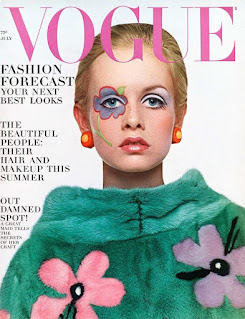I've only just realized that "Mrs. Exeter", Vogue magazine's imaginary mature woman, was a play on the title of Sergeant's painting, "Madame X". I've been reading about Mrs. Ex in "1950s in Vogue—The Jessica Daves Years" by Rebecca C. Tuite.
Jessica Daves was the unsung editor of Vogue magazine from 1952-62, important years for American women and fashion in America. Mrs. Daves loved the name "Mrs. Exeter", and now I see why. Unlike Sargent's painting, notorious for its since-replaced slipped strap, Mrs. Exeter was the pinnacle of chic correctness.
 |
| "Madame X" |
Mrs. Exeter was first introduced to Vogue readers in 1948. At the time Jessica Daves was "active editor". She would become editor-in-chief when Edna Woolman Chase retired in 1952. By that time Jessica was 58 and Edna 72. It makes sense they thought having a Mrs. Exeter was a smart move.
As I myself have certainly discovered, one doesn't stop loving fashion on a particular birthday. The target age Vogue chose for Mrs. Exeter was "approaching 60". In theory women that age have more time and money to spend on beauty and fashion—that may in fact have been true back then—and Jessica Daves was nothing if not conscious that Vogue was a business. The more readers it could connect with, the more advertisers would sign on.
But I do feel Mrs. Exeter was a labor of love. Not only was she given the personality of the observant Mrs. Daves, she was enjoyed by all Vogue readers as the voice of that wiser, fashionable, big sister, aunt, parent, friend.
Mrs. Exeter also appeared twice on the cover of American Vogue (one above left). British Vogue had their own Mrs. Exeter (right cover) often "played" by one model specifically recruited to fit the role. The American Mrs. Exeter began as illustration then morphed to photography. No one model assumed the role.
 |
| The British Mrs. Exeter |
Quite a few "Mrs. Exeter" features showed her wearing Vogue Patterns, and I think I know why. Many women's magazines were also tied into sewing pattern companies (McCall's would be an obvious example). Conde Nast owned quite a few besides the Vogue brand. Magazines were beholden to run at least a few pattern features a year. As a reader and creator of my own wardrobe I loved when they did. Once I joined the staff of a fashion magazine myself, I saw the required pattern features were treated respectfully but with no real enthusiasm.
 |
| Early illustrated Mrs. Exeter |
 |
| Photography and wise words from Mrs. Exeter |
 |
| For Mrs. Exeter (or her seamstress) |
Besides showing off her good taste in clothes, Mrs. Exeter penned a column that shared her musings. She was such a successful invention there was debate among Vogue readers whether in fact she wasn't a real person.
NB There didn't seem to be anything wrong with this in magazine circles. For many years the "Jake: A Man's Opinion" in Glamour was written by several men, none of them named Jake. At least they were men.
Looking, acting or being young were never goals of Mrs. Exeter's, who happily sported gray hair with her blessedly trim figure. When Diana Vreeland took over Vogue in 1962, Mrs. Exterer made her exit. No spring chicken herself (59 when she became editor in chief) Diana coined the term "youthquake" to describe what was happening in fashion and culture. We've been beholden to youth culture ever since.
 |
| Vogue, July 1967 |















